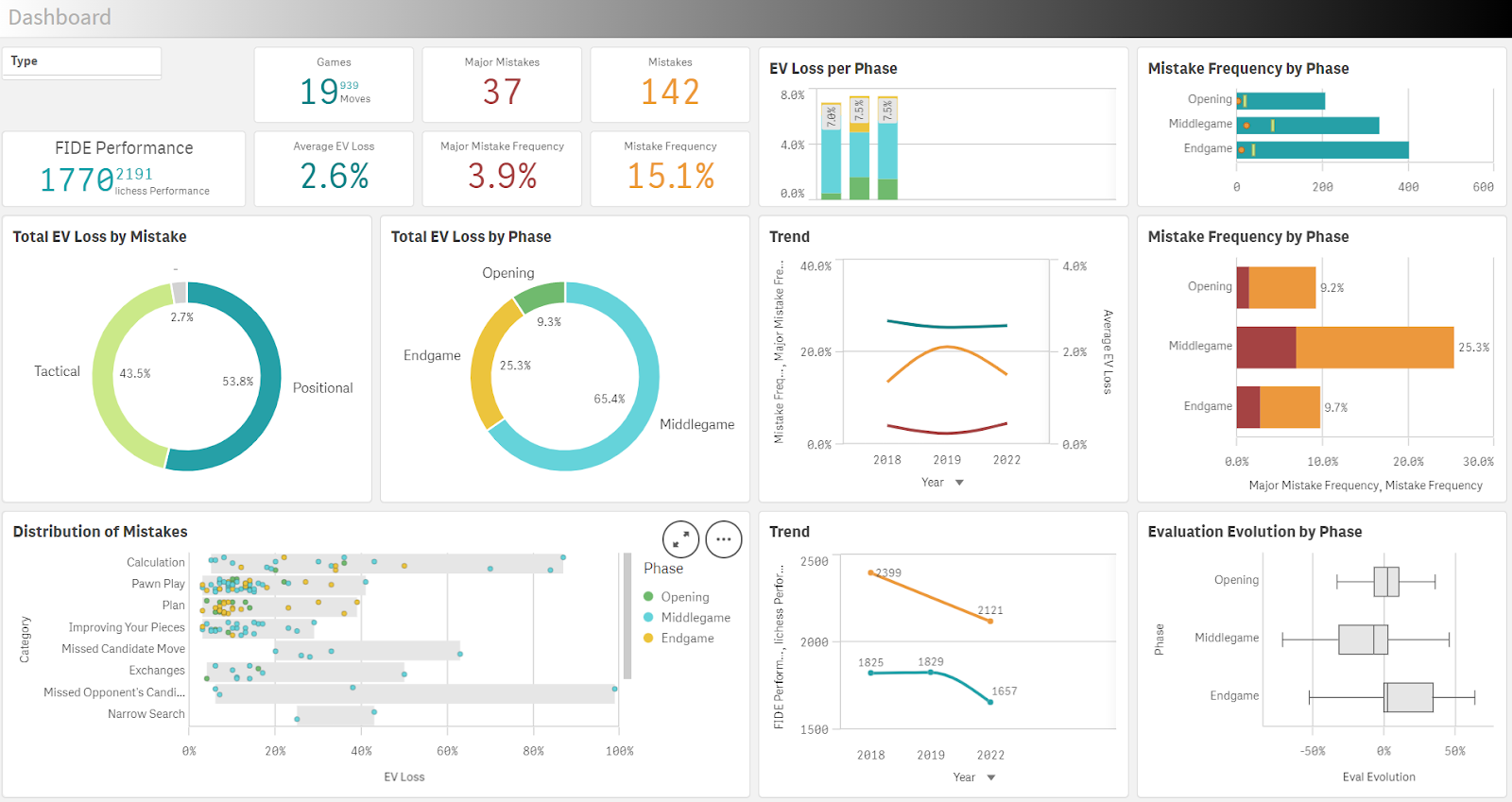In my late teens I feel in love with the game of chess. That is way too late in life to have a realistic chance of achieving true mastery of the game. Regardless, this hasn't prevented me from continuing my journey, trying to increase my knowledge and becoming more skillful.
I am now starting a new serious attempt to improve my understanding and execution of chess. Building on my past failures, I will implement a few novel ideas to this approach. My plan is to document the process for my own benefit and accountability, and for others to hopefully get inspiration from.
My Hitherto Chess Journey
Let's start with briefly recounting my chess journey so far. I can safely state that I've invested my 10,000 hours in chess without achieving anything resembling mastery. I started playing in my late teens. Today I am 47. I have been playing in the Swedish national league, postal correspondence chess, online leagues and been active in computer chess organizations. My FIDE Elo rating plateaued early at around 1850 where it's been slumbering for the last 25 years. Around the millennium I took a decade off chess. Then, in 2015 I set a serious goal of reaching 2000 FIDE rating by year 2019. This failed miserably and instead my rating has since plummeted to 1784.
The Gloomy Old Approach
So how come I don't get better at chess? Let's understand which approach I took in 2015 and why it did not materialize in a rating gain. Since the very beginnings of my chess studies I have been attracted to opening theory. Like a mosquito mesmerized by a light source, and just a productive. At least 80% of my chess study time has been devoted to this part of the game. The vast majority of the books in my chess shelf are dedicated to openings. Consequently, this is how I approached my 2015 improvement plan as well. If all you have is a hammer, everything looks like a nail. With an Excel-based and Python-supported data-driven approach I meticulously analyzed my performance by opening. I then selected openings where I maximized my advantage at move 12 and focused on understanding the relevant middlegame plans in these opening variations.
While some aspects of my game improved, others remained unchanged. For example, coming out of the openings (at move 12) the average evaluation of the position was +.57 as White and +.35(!) as Black over 131 games with a classical time control. Still, my game results and performance ratings were feeble. In hindsight, it is quite obvious that I was optimizing for a local maximum of my opening game, without considering how that would relate to my overall play.
The Shiny New Approach
Based on my experiences with the old approach, it is now time to try something else. My approach will very much be focused on data. Here's a example the dashboard I am using to measure and pinpoint my mistakes:
In future posts I will dive deeper into this analysis. Also, my new approach is a not a quick fix-plan, but rather a lifelong process for improvement. These are the steps I am outlining in my improvement process:
- Data Mining. Collect data on mistakes from my classical time control tournament games.
- Data Exploration. Explore the data and gather insights around my weaknesses, using a holistic approach to my chess.
- Pinponting. Identify one isolated aspect of my game to improve.
- KPIs. Define key performance indicators to quantify my performance in this aspect of my game.
- Planning. Create a training plan for improving this aspect.
- Training. Execute the plan with great focus.
- Result Measuring. Monitor how the indicators change as a result of my focused training. Also monitor the overall performance of my chess.
- Repeat from point 2 above with a new aspect of improvement.
At the onset, I feel confidence in this process for several reasons:
- There are no goals (not even rating goals), but rather directions. The process and actual learning is the key rather than the goal. It's a mindset taken from the book Atomic Habits.
- The process attempts to look holistically at my chess game, so as not to sub-optimize a part of my game that has low impact on my actual results.
- The fact-based approach will make it difficult for me to fool myself into focusing on low-impact, but alluring study areas.
- The continuous improvement cycle should be a good foundation to build on for the future.
In future posts I will dive deeper into each of the eight steps.

Comments
Post a Comment